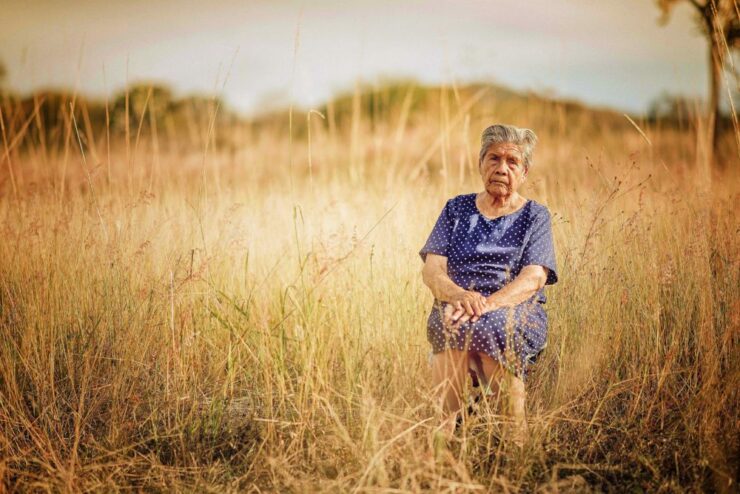Demographic aging is transforming all societies around the world, and this 21stcentury megatrend demands a similar transformation of global health policy. Now and in the coming decades, the World Health Organization can build on efforts like its Global Strategy and Plan of Action on Ageing and Health to apply population aging as a guiding lens for global health policies, particularly those related to the UN’s Sustainable Development Goals (SDGs).
Two trends—longevity and falling birth rates—are reshaping global society, which will include two billion people over 65 by mid-century; double today’s total. In the past 100 years, dramatic progress in medicine and science has extended life expectancy to our 70s and beyond, and this ceiling is projected to keep rising, in both developed and developing nations. At the same time, birth rates have plunged: in countries across East Asia, Europe, and North America, fertility is well below the replacement rate. And though high-income countries were the first to age, middle- and low-income countries are close behind as they modernize and urbanize. Roughly 67% of the world’s older people currently live in developing regions, and this number will reach 80%—or 1.7 billion people—by 2050.
This has dramatic implications for global health policy. In particular, while the WHO has traditionally focused on communicable diseases, it must now continue its pivot towards the exploding burden of age-related loss of functional ability and non-communicable diseases (NCDs) like Alzheimer’s, cancer, heart and lung disease, and diabetes. These NCDs pose a devastating threat to both older people’s quality of life and the fiscal sustainability of national economies and health systems. Therefore, enabling healthy aging will be critical not only to the SDG on health and well-being, but also the SDGs focused on equitable economic growth, poverty reduction, and sustainable cities; all of which link to how well global society handles aging.
The WHO has taken critical steps with its Global Strategy and Plan of Action on Ageing and Health in 2016 and Global Action Plan on Dementia in 2017. The Plan of Action on Ageing and Health, in particular, is a breakthrough document that first applied aging as an essential new lens for global health policy.
This lens reveals three essential goals:
Shift conversations on aging and old age. Cultural norms and priorities have not kept pace with rapidly expanding longevity. Poor health is still often considered a “natural” part of getting old, which automatically lowers the value of older adults’ well-being. Instead, we need conversations and commitments at the highest levels of national and international policy to promote healthy aging and older adults’ quality of life. This cultural shift will be a critical enabler for a variety of health efforts that have been overlooked for too long, such as adult immunization, therapeutic progress on Alzheimer’s, NCD prevention efforts, and new models of caregiving—solutions that promise to improve health outcomes and deliver cost savings.
Pivot to promoting functional ability. Until now, good health has meant the absence of disease, with health efforts focused on developing and providing access to medicines for specific illnesses. But this concept of health is no longer sufficient. Instead, we must focus on what the WHO calls “functional ability”—maintaining well-being, quality of life, and capacities across the course of our lifetimes. In practical terms, this means global health efforts designed to promote healthy aging and preventive health at every stage of life, help older adults remain active and independent, and address conditions of aging like the deterioration of skin, vision, bone, and oral health. As our lives stretch towards 100, we need to make sure those extra decades are healthy and productive, not just long.
Defuse a looming NCD crisis. We must make combatting NCDs a cornerstone of global health, as these diseases are linked closely to age and their burden is growing rapidly. NCDs account for roughly 70% of global mortality, but just 1% of global health funding. Alzheimer’s, in particular, threatens to inflict a devastating human and economic toll as populations age, affecting 75 million people by 2030—63% of them in developing countries—at a cost of $2 trillion. This demands a global response that both promotes lifestyle changes to prevent dementia and deepens research funding to develop truly effective therapies. Such efforts across all NCDs will be necessary to meet the SDG target of reducing premature mortality from NCDs by one-third by 2030, while also improving quality of life for older adults and the fiscal sustainability of health systems.
To achieve these goals, the WHO and other stakeholders can elevate efforts like the Aging and Dementia strategies and draw attention to the integral connections between aging and global health. If successful, these actions will not only promote healthy aging, they will seize it as a key driver of economic growth and productivity, high quality of life, fiscal sustainability, poverty reduction, and sustainable communities.
Simply put, it’s time for a new era in global health—one designed expressly for the challenges and opportunities of our aging world.
Photo by Cristian Newman
Source: Diplomatic Courier
 Global Coalition On
Global Coalition On 